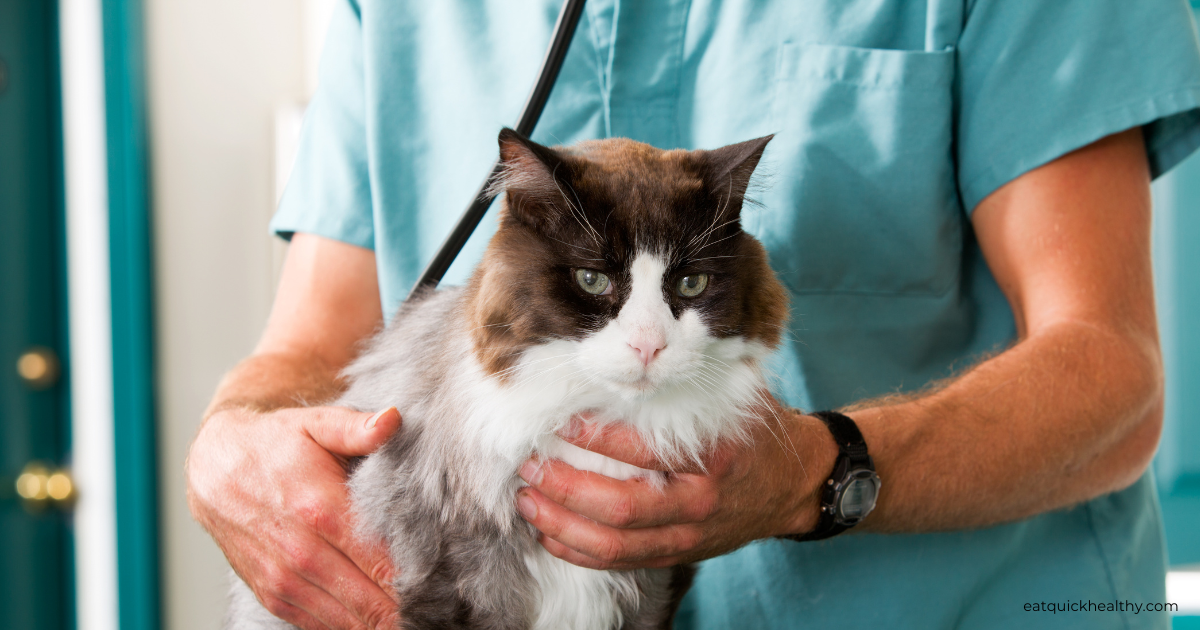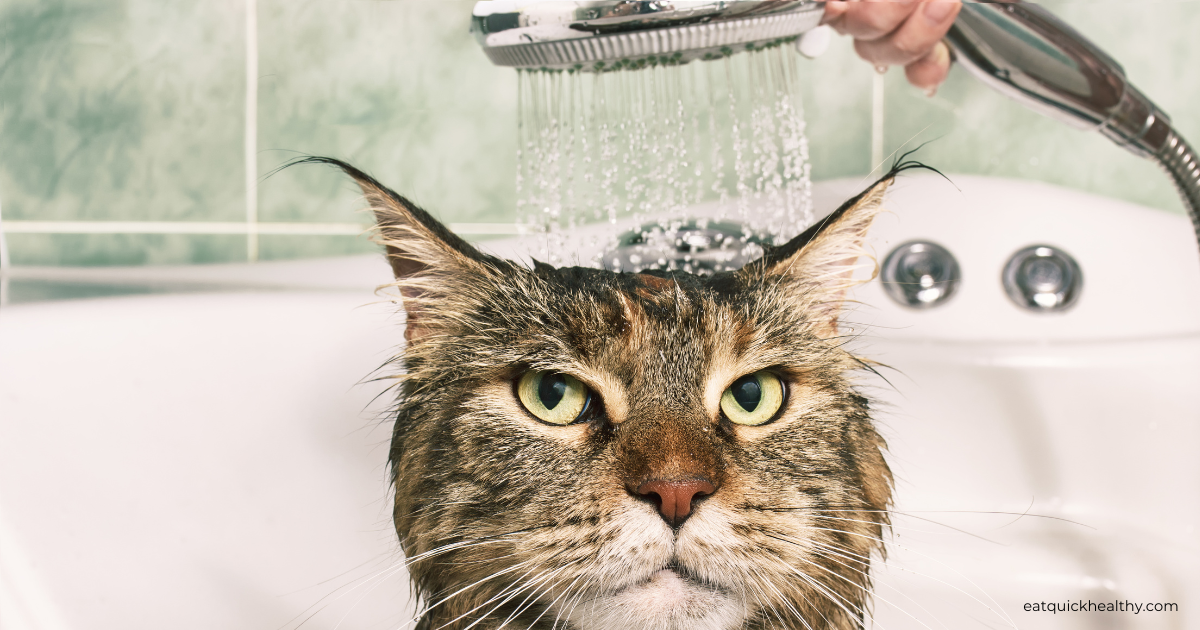Bath days for our household of pets are always special. Bathing pets is a cherished ritual, a time when we get to show them a little extra love and care. On one memorable bath day, I had everything set up for both our cat and dog. But just as I was about to start, I realized I was out of our cat’s special shampoo. Without thinking, I grabbed our dog’s shampoo, but then I paused. Something didn’t feel right. I asked myself, “Can I use dog shampoo on my cat?”
The label caught my eye. It listed ingredients like pyrethrin, which got me thinking: “Can I use dog shampoo for cats?” Before going any further, I picked up my phone and called our veterinarian. The answer was a resounding no. It turns out, many dog shampoos contain ingredients that can be toxic to cats. Yikes!
Don’t worry, fur parents—I called and confirmed with a veterinarian so you don’t have to. Let’s dive into why using dog shampoo on cats is a big deal. We’ll explore:
- differences between cats and dogs
- why dog shampoo isn’t safe for cats
- what to do if you’ve already used it when it’s time to rush into a hospital
- whether you even need to bathe your cat
- a DIY cat shampoo recipe for emergencies
Let’s get started!
How Are Cats and Dogs Different?
Cats and dogs might both be beloved pets, but each has different skin and bathing needs. Cats, known for their meticulous grooming, have more sensitive, acidic skin compared to dogs’ more neutral skin. Using a shampoo formulated for more acidic pHs can strip your cat’s skin and fur of protective oils, causing dryness and irritation. Therefore, it’s crucial that each pet has their own pH-balanced shampoo to maintain their healthiest skin, hair, and coat.
What if I Wash My Cat with Dog Shampoo?
If you wash your cat with dog shampoo, several things could happen, and none of them are good. Dog shampoos often contain ingredients like pyrethrin, which are safe for dogs but can be toxic to cats. Your cat might experience skin irritation, itching, and redness due to the different pH balance in dog shampoo. In more severe cases, your cat could exhibit signs of toxicity, such as excessive drooling, vomiting, lethargy, or even seizures.
What If You’ve Already Washed Your Cat with Dog Shampoo?

Don’t panic! Here’s what you need to do:
- Rinse Thoroughly: Immediately rinse your cat with plenty of water to remove as much of the dog shampoo as possible.
- Monitor Your Cat: Keep a close eye on your cat for any signs of discomfort or allergic reactions, such as excessive scratching, redness, or swelling.
- Contact Your Vet: If you notice any of these signs or if your cat seems unusually lethargic or starts vomiting, call your veterinarian right away.
- Vet Visit: In severe cases, take your cat to the vet for a thorough check-up.
Remember, it’s always better to be safe than sorry!
Do You Need to Bathe Your Cat?

But do we even need to bathe our cats in the first place? Cats are generally excellent at keeping themselves clean. Most indoor cats don’t need regular baths unless they have gotten into something particularly messy or have a skin condition that requires special care.
Long-haired breeds or elderly cats might need occasional help with grooming. However, for the most part, your feline friend can take care of their hygiene quite well on their own.
DIY Cat Shampoo

Next time you run out of cat shampoo, don’t fret! Don’t try to think if you can use dog shampoo on your cat because you can easily whip up a simple and natural cat shampoo at home with ingredients you probably already have. Here’s a quick recipe:
DIY Natural Cat Shampoo Recipe:
- 1 cup of water: Helps dilute the mixture, making it gentle on your cat’s skin.
- 1/4 cup of apple cider vinegar: Acts as a natural deodorizer and can help with mild skin irritations.
- Choose one of the following:
- Option 1: 1/4 cup of liquid castile soap: A gentle, plant-based soap that effectively cleanses without causing irritation. Look for unscented or mild varieties. Avoid using castile soap with added fragrances or essential oils, as these may be irritating to your cat’s skin.
- Option 2: 1/4 cup of baby shampoo: A mild and gentle cleanser suitable for sensitive skin. Opt for a fragrance-free formula to minimize the risk of irritation.
- Option 3: 1/4 cup of unscented liquid dish soap: An effective cleanser that removes dirt and grease. Choose a mild, unscented variety to avoid irritating your cat’s skin. Rinse your cat thoroughly after using dish soap to prevent any residue from causing discomfort or skin issues. Precaution: While dish soap can be used occasionally as a substitute, avoid using it regularly as it may strip natural oils from your cat’s skin and cause dryness or irritation.
- A few drops of pet-safe essential oil (like lavender): Adds a pleasant scent and has calming properties.
Mix these ingredients well and use them to gently clean your cat. Always rinse thoroughly to ensure no residue is left behind. This homemade shampoo will leave your cat clean and fresh without the harsh chemicals found in some commercial products.
If you have a dog too, check out my other blogs for helpful tips and insights!
- Unlock the Benefits of Coconut Oil for Dogs: A Complete Guide
- The Benefits of Salmon Oil for Dogs
- Can Dogs Eat Rosehip Oil? Can You Use Rosehip Oil For Dogs Skin? Full Guide!
Conclusion
So, there you have it! Next time you know the answer to the question “can I use dog shampoo on my cat”. When it comes to bathing your feline friends, it’s crucial to use products specifically designed for cats to keep them safe and healthy. Remember, using dog shampoo on your cat can lead to potential toxicity and skin irritations. For more tips, tricks, and stories about our furry companions, be sure to check out my other blogs. Happy bathing, and give your pets an extra cuddle from me!
Stay pawsitive!



Comments are closed.